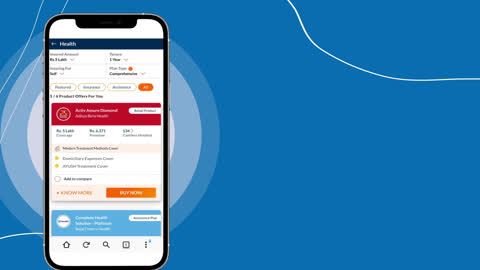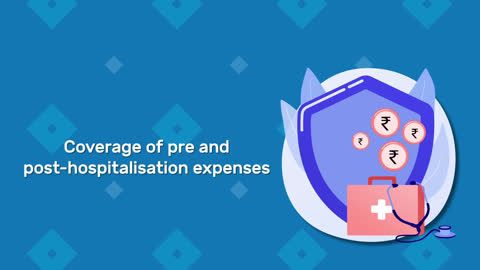How does part payment work?
The process of part payment is straightforward. Whenever an extra payment is made, it is directly adjusted against the principal, not divided between interest and principal as in regular EMIs. As the principal reduces, the interest charged on the remaining balance also comes down.
Depending on the lender’s policy, the borrower can choose between reducing the monthly instalment amount or shortening the repayment tenure. Both approaches bring measurable benefits either lighter EMIs or an earlier loan closure.
Benefits of part payment on loan against shares
Making part payments on a loan against shares offers several advantages, helping investors manage repayments without disrupting long-term financial goals.
- Reduced interest burden: Lowering the principal balance means less interest accrues over time, leading to considerable cost savings.
- Flexible repayment structure: Part payments allow debt reduction whenever additional funds are available, providing more control over cash flow.
- Shorter loan tenure: Early repayment of part of the principal can shorten the tenure, enabling faster debt closure.
- Better credit profile: Partial prepayments reflect disciplined financial behaviour and positively influence the credit score.
These benefits together make part payments a practical choice for maintaining financial health and achieving early repayment milestones.
Get fast approvals and flexible repayment options. Apply now
Things to know before opting for partial payments
Before initiating a part payment, understanding the loan’s specific terms ensures that the step remains financially beneficial.
- Prepayment terms and conditions: Understand the terms related to prepayment, as some lenders might have restrictions or specific windows for making part payments.
- Minimum part payment amount: Check if there is a minimum amount required for part payments to be effective.
- Impact on EMI or tenure: Confirm whether the part payment will affect your monthly installment amount or the tenure of the loan.
- Frequency of payments: Know how often you can make part payments within a year without penalties.
Penalty charges on part payment of loan against shares
Reducing or avoiding part payment charges is possible through careful planning and informed action.
While part payment typically helps save on interest, some lenders apply a nominal fee or penalty. These are generally small but worth checking beforehand.
- Prepayment penalty: Some lenders may charge a fee if the part payment exceeds a certain percentage of the loan amount.
- Calculation of penalty: The penalty might be a percentage of the part payment amount or a fixed fee.
- Specific terms: Penalties can vary based on how much of the loan is left and the timing of the part payment.
How to save on part payment charges on loan against shares?
- Review loan agreement: Carefully read through the loan agreement to understand the specifics regarding part payment charges.
- Timing of payments: Making part payments during specified no-penalty periods if your lender offers such windows.
- Negotiate terms: If possible, negotiate the terms of part payments before finalising the loan to minimise or eliminate charges.
- Regular review: Regularly review your loan terms, as changes in regulations or lender policies might allow more favourable part payment options.
When is part payment on loan against shares a smart choice?
Part payments are most effective when liquidity improves temporarily, such as after receiving investment returns, annual bonuses, or business profits. Using a portion of this income to reduce debt helps in cutting interest expenses and maintaining a lower liability profile.
It also becomes a wise move during times of rising market volatility. Instead of selling shares to handle expenses, investors can use partial repayments to manage existing loans more comfortably while keeping their equity intact.
In essence, part payment works best when timed with periods of surplus income or favourable market conditions, making it a strategic financial decision rather than a reactive one.
Part payment vs full prepayment
Both part payment and full prepayment aim to reduce outstanding debt but differ in scope.
Full prepayment closes the loan completely before the end of tenure, whereas part payment allows incremental reduction of the principal over time.
Part payment maintains liquidity and flexibility, ideal for those who prefer to keep an active credit line. Full prepayment eliminates the loan entirely but may come with higher prepayment charges.
Impact of part payment on future borrowing
Consistent part payments demonstrate strong repayment discipline, which enhances creditworthiness. Lenders often view such behaviour positively, as it indicates proactive debt management and lower risk.
A better credit score can improve eligibility for future loans, often resulting in faster approvals and more favourable terms. Thus, regular part payments not only reduce current debt but also strengthen long-term borrowing potential.
Factors to consider before making part payments
- Interest rate trends: When interest rates are high, part payments yield more savings.
- Cash flow stability: Ensure sufficient liquidity remains post-payment to handle daily or business expenses.
- Market performance: Avoid liquidating promising investments prematurely just to make a part payment.
- Loan tenure remaining: Part payments made earlier in the tenure generate higher savings.
Weighing these factors ensures that part payments serve as an asset in the broader financial plan rather than an unplanned expense.
Conclusion
A loan against shares with part payment flexibility serves as a reliable bridge between liquidity and investment continuity. It empowers borrowers to manage financial obligations strategically while ensuring investments remain intact and productive. By understanding how part payment works, its benefits, and possible costs, investors can make informed choices that lead to lower interest outgo and better credit standing. When used wisely, it becomes an effective way to balance short-term funding needs with long-term financial stability.
Borrowers can enjoy a smooth, digital journey with minimal intervention. Experience quick approval and hassle-free disbursal. Apply now






